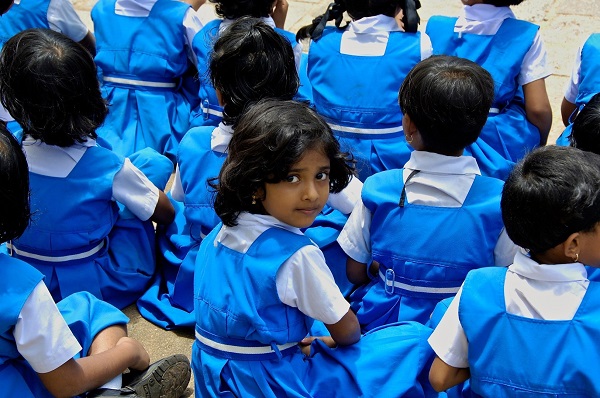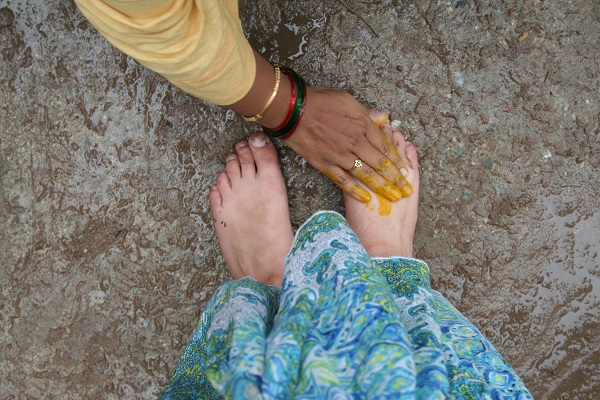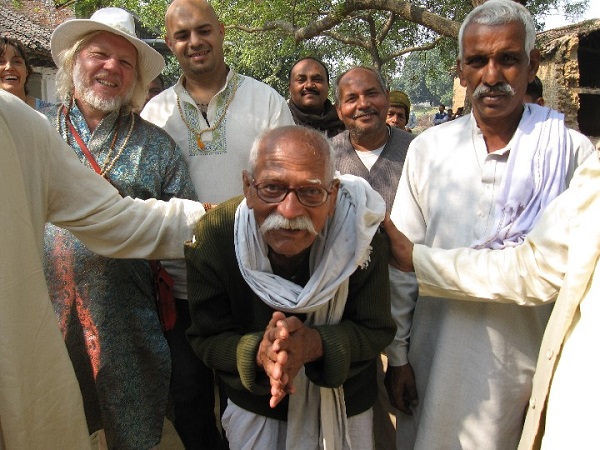What do school uniforms mean for children and parents? Are they levellers or do they set children up for difficulties?
 by Shweyta Mudgal
by Shweyta Mudgal
This week I’ve had to buy my daughter her first ever school uniform. Slightly shy of being all of two, she is already required by her pre-school to wear a uniform every day to class, starting next month. This recent occurence took me aback on two levels – the first, a melodramatic, mush-filled ‘What?!’ followed by an in-denial-that-my-baby-is-now-grown-up sort of a feeling, and the second, the more ethos-laden, question-the-rule level: Isn’t it too soon to cage her whimsy and regulate this aspect of her life?
Or is it?
I decided to ask the question to her very surprised teacher. The teacher replied that she’d never been asked this question before, as most parents just went with the flow. She further clarified that as per her reasoning, this was the right age to institute an aspect of communality in the school kids; a sense of belonging to their school, and that the uniform was a tool merely implemented to do just that. Also, with an increase in outdoor excursions and play activities, this ‘uniform-isation’ of the toddlers she said, was to make it easy for the teachers to identify them among crowds outside the classroom.
Fair enough! I bought both – the practical side of her rationale and the uniform as well. But as I folded away at the latter, my mind refused to let go of this issue just yet – this issue of whether to uniform or un-uniform.
For most people like me who had their primary/secondary education in India, school uniforms have always been an easily accepted, unchallenged and mandatory aspect of growing 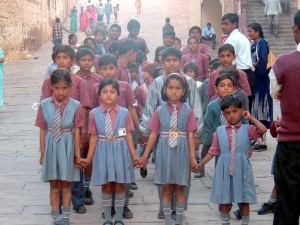 up. A normal, mundane ritual of practice – to don a standardised dress code while going to school, similar to packing one’s bag with books as per the day’s time table.
up. A normal, mundane ritual of practice – to don a standardised dress code while going to school, similar to packing one’s bag with books as per the day’s time table.
In fact, at schools like mine, students had varieties in uniforms too – there was the regular school uniform, to be worn on a majority of the school days, the ‘colour classified’ ones (based on which ‘House’ one belonged to) to be worn on the days we had Physical Training class (usually Wednesdays) and the ‘Girl guide’ uniforms to be worn the days we had ‘Guiding Class’ (usually Fridays). There were a few exception days a.k.a the ‘colour dress’ days, like on one’s birthday, or on a ‘feast’ day, typical of convent schools such as mine, when we could go ‘un-uniformed’ to school, wearing our regular clothes for a change. Yet, by and large, one wore the uniform to school every day, making it practically the one piece of clothing to have spent the majority of their childhood in!
Cut to the Western part of the world, the United States of America, for instance. Here, school uniforms have been hotbeds of controversy, bringing forth issues that some say endanger their ‘First Ammendment’ rights. This heavily-questioned and dissected aspect of schoolgoing has largely divided up this part of the world in two distinct schools of thought – those ‘pro’ and those ‘against’ the idea of wearing uniforms to school.
Those that espouse the ‘When in school, wear a uniform’ theory, do so because of the following reasons:
– Students experience less pressure in deciding what to wear each morning, thus taking less time to get ready before school (making parents’ lives easier in the process)
 – Economically, uniforms cost less overall and make up for a larger part of a child’s wardrobe (again putting parents’ pockets at ease).
– Economically, uniforms cost less overall and make up for a larger part of a child’s wardrobe (again putting parents’ pockets at ease).
– There is an evident reduction in social conflict in the classroom, as uniforms act as great levellers, providing an even playing field. In uniform, all students are reduced to being integral units of one organisation, fostering a sense of belonging to their institution and a team spirit, where their all-for-one-and-one-for-all camaraderie is boosted as all are dressed alike.
– In today’s age of higher ‘brand’ consciousness in general, schools have the potential of becoming breeding grounds for fashion trends and ‘status-symbol definitive clothing’. One garb for all creates less chances of causing rifts in students about what one should wear and what one shouldn’t. A standard uniform diminishes the focus towards fashion and veers it more towards learning, which is the real purpose of schooling in the first place.
Those that are against the school uniform code of conduct, believe the following –
– Schools should celebrate individuality and diversity among its pupils and school uniforms work against that effort, coercing students into conformity. This results in the transformation of school corridors into seas of blandly outfitted, think-alike robots. Or as Pink Floyd would like to call them “….just another brick in the wall.”
– The homogeneity that school uniforms impose, limits kids from expressing themselves freely, which in turn might lead them to other forms of expression such as tattooing and body-piercing. (Not particularly favoured by many parents.)
– School uniforms are expensive affairs, especially for families with more than one child as hand-me-downs are not looked upon favourably by younger siblings.
– While they might assuage the fashion parades in classrooms, uniforms do create another contest in school: the best-body competition. When every student is wearing the same uniform, everyone fills it out differently making it easier to identify who’s fat and who’s thin, who’s tall and who’s short – image issues that regular clothes might be able to keep under wraps better.
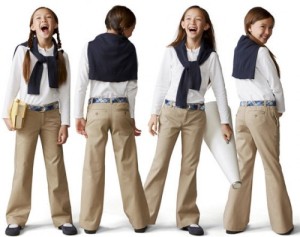 And so on and so forth….the global debate over school uniforms continues, hinging itself clearly on their effectiveness in practice. There may not be a clear winner so far as everyone is entitled to their own opinion. Yet, what undoubtedly emerges on the surface from this debate is the importance we associate with the school uniform (or the lack of it thereof). It ceases to be just a simple garb any more, having transcended into a modern-day metaphor of a ‘supposed lack of freedom of expression’ or a ‘leveller that evens out the playing field’, depending on which side of the fence you’re sitting on.
And so on and so forth….the global debate over school uniforms continues, hinging itself clearly on their effectiveness in practice. There may not be a clear winner so far as everyone is entitled to their own opinion. Yet, what undoubtedly emerges on the surface from this debate is the importance we associate with the school uniform (or the lack of it thereof). It ceases to be just a simple garb any more, having transcended into a modern-day metaphor of a ‘supposed lack of freedom of expression’ or a ‘leveller that evens out the playing field’, depending on which side of the fence you’re sitting on.
Its evolution into a bone of contention has spiralled its worth – alleviating it onto a pedestal of sorts – where it readily sits, with its purpose being subjected to our analyses and comprehension, our discourse and apprehension. Perhaps it laughs to itself, looking down at us from there, as we argue away about it’s pros and cons in today’s times. Surely it revisits it’s past and goes back to the uncomplicated, simpler times, that it was first invented in – in the mid 1500’s, at a charity school in England, which gave children from poorer backgrounds the chance to have a better education for free. And in handing out simple, cheaply-dyed blue coats, gave them their first ever chance at calling a pair of clothes, their very own!
A Mumbaikar by birth and a New Yorker by choice, recently-turned global nomad Shweyta Mudgal is currently based out of Singapore. An airport designer by day, she moonlights as a writer. ‘Outside In’ is a weekly series of expat diaries, reflecting her perspective of life and travel, from the outside-in. She blogs at www.shweyta.blogspot.com and sheepishly confesses to having sentimentally held on to her school-uniform from over two decades ago, even today.
(Pictures courtesy www.projectcarousel.org, globalgoodgroup.com, www.fotopedia.com, reliefprojects.blogspot.com. All images are used for representational purpose only)

